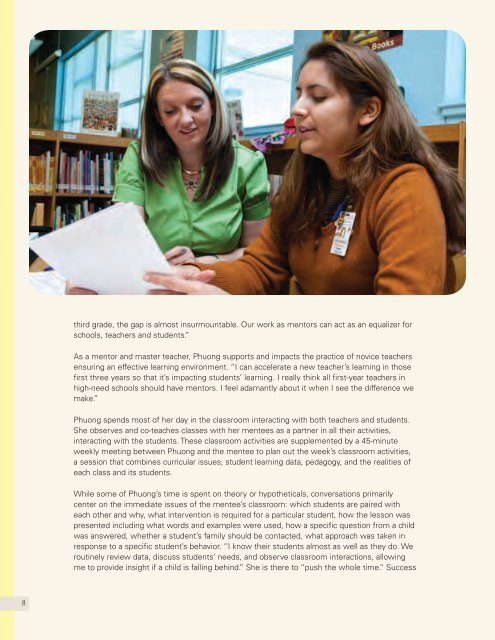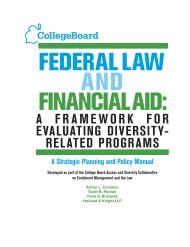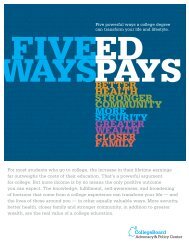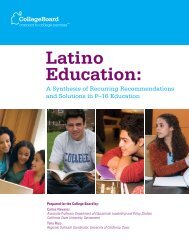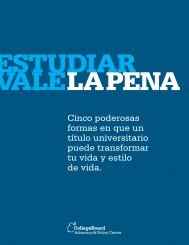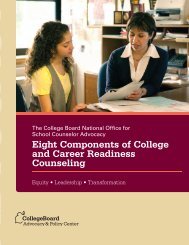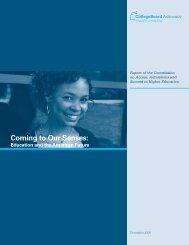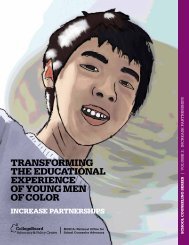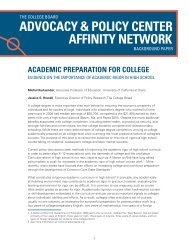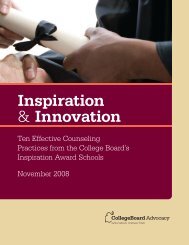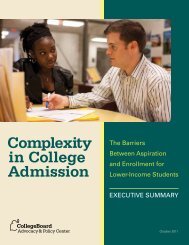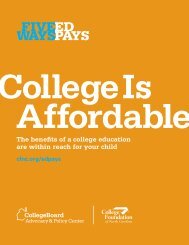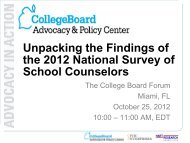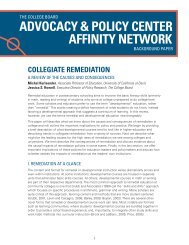Teachers Are the Center of Education: - New Teacher Center
Teachers Are the Center of Education: - New Teacher Center
Teachers Are the Center of Education: - New Teacher Center
Create successful ePaper yourself
Turn your PDF publications into a flip-book with our unique Google optimized e-Paper software.
third grade, <strong>the</strong> gap is almost insurmountable. Our work as mentors can act as an equalizer for<br />
schools, teachers and students.”<br />
As a mentor and master teacher, Phuong supports and impacts <strong>the</strong> practice <strong>of</strong> novice teachers<br />
ensuring an effective learning environment. “I can accelerate a new teacher’s learning in those<br />
first three years so that it’s impacting students’ learning. I really think all first-year teachers in<br />
high-need schools should have mentors. I feel adamantly about it when I see <strong>the</strong> difference we<br />
make.”<br />
Phuong spends most <strong>of</strong> her day in <strong>the</strong> classroom interacting with both teachers and students.<br />
She observes and co-teaches classes with her mentees as a partner in all <strong>the</strong>ir activities,<br />
interacting with <strong>the</strong> students. These classroom activities are supplemented by a 45-minute<br />
weekly meeting between Phuong and <strong>the</strong> mentee to plan out <strong>the</strong> week’s classroom activities,<br />
a session that combines curricular issues, student learning data, pedagogy, and <strong>the</strong> realities <strong>of</strong><br />
each class and its students.<br />
While some <strong>of</strong> Phuong’s time is spent on <strong>the</strong>ory or hypo<strong>the</strong>ticals, conversations primarily<br />
center on <strong>the</strong> immediate issues <strong>of</strong> <strong>the</strong> mentee’s classroom: which students are paired with<br />
each o<strong>the</strong>r and why, what intervention is required for a particular student, how <strong>the</strong> lesson was<br />
presented including what words and examples were used, how a specific question from a child<br />
was answered, whe<strong>the</strong>r a student’s family should be contacted, what approach was taken in<br />
response to a specific student’s behavior. “I know <strong>the</strong>ir students almost as well as <strong>the</strong>y do. We<br />
routinely review data, discuss students’ needs, and observe classroom interactions, allowing<br />
me to provide insight if a child is falling behind.” She is <strong>the</strong>re to “push <strong>the</strong> whole time.” Success<br />
8


